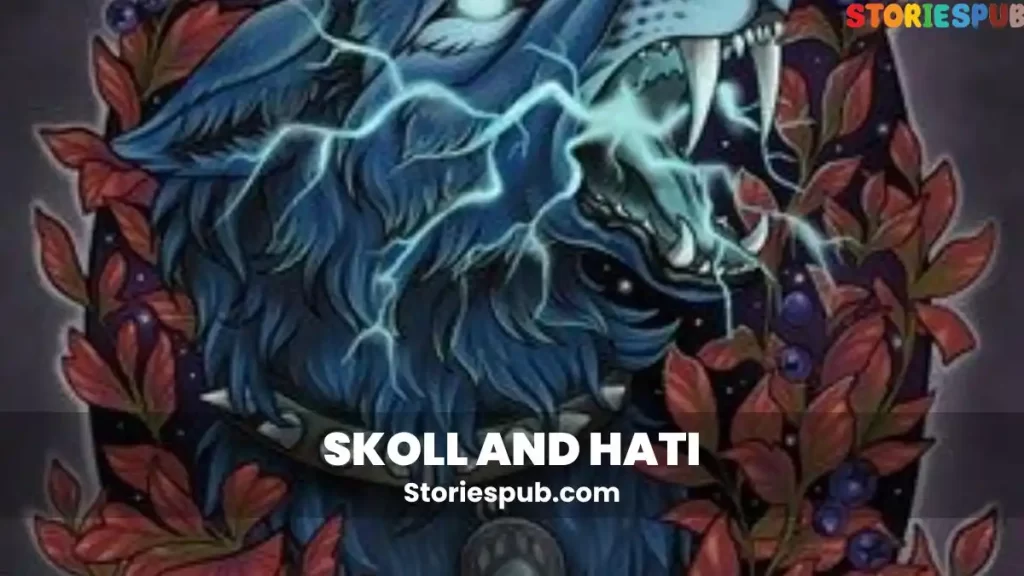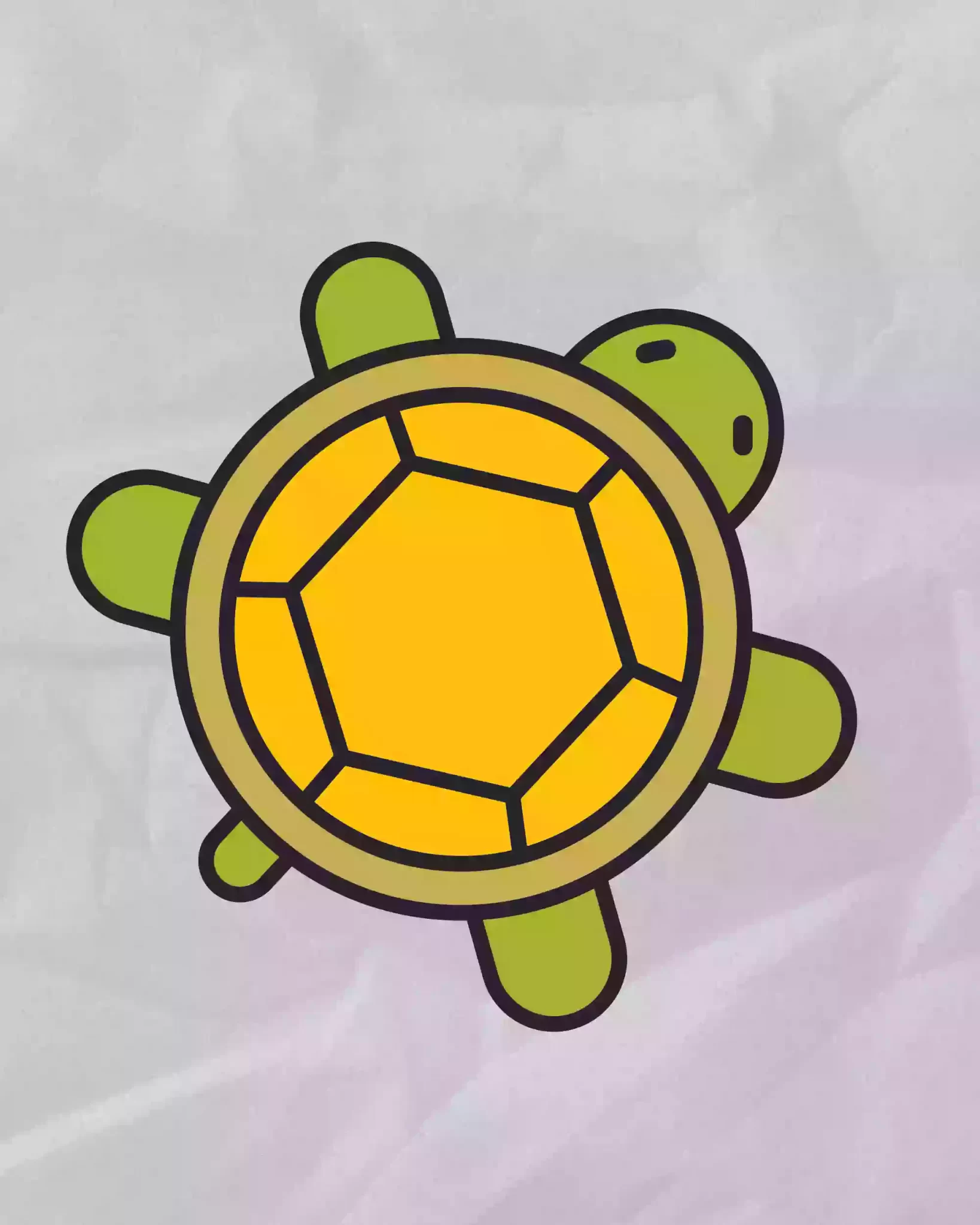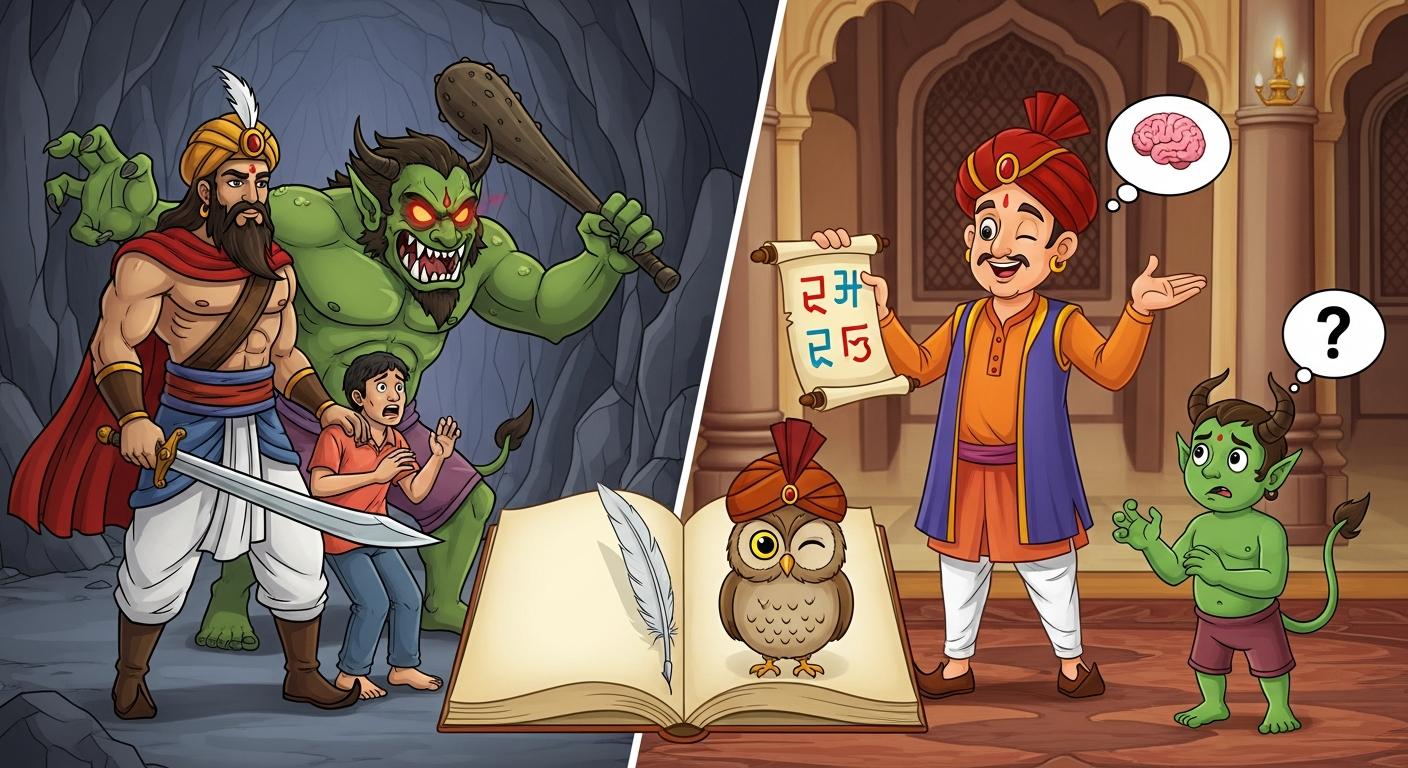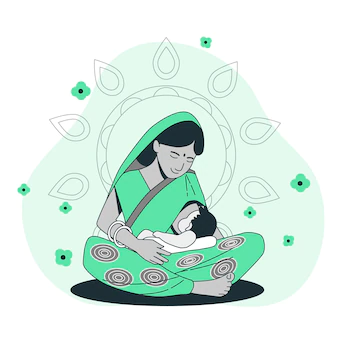Summarize this Article with:
Skoll and Hati – The Wolves Who Chase the Sun and Moon

Introduction
Norse mythology is filled with fascinating stories of gods, giants, and other fantastical creatures. One such story is that of Skoll and Hati, two wolves who chase the sun and moon across the sky.
In Norse culture, the sun (Sol) and moon (Mani) were important celestial bodies that were believed to have their own spirits. It was thought that Skoll and Hati were hunting these spirits in an eternal chase through the heavens.
The story of Skoll and Hati has been passed down through generations of Norse mythology enthusiasts, captivating audiences with its thrilling plot. As an enduring symbol of ancient Norse culture, this tale continues to inspire new generations of storyteller
Brief Overview of Norse Mythology
Norse mythology is a complex web of tales that revolve around several powerful gods, including Odin, Thor, Freyja, Loki, and many others. These deities are depicted as having supernatural powers over various aspects of nature such as storms or fertility.
Additionally, there are also numerous giants, dwarves and other monsters who pose significant threats to both humans and gods. While many myths focus on the exploits of these powerful figures in battles against each other or against mythical beasts like dragons or world serpents like Jormungandr among others; there are also more domestic tales about everyday life in Viking culture like farming or family dynamics.
The Story of Skoll and Hati
According to Norse mythology, Skoll was a wolf who chased after Sol (the sun) every day as she traveled across the sky. His brother Hati similarly pursued Mani (the moon) on her nightly journey across the heavens. The wolves’ sole purpose was to catch up with their prey so they could devour them, bringing about a never-ending cycle of day and night.
The chase of Skoll and Hati is an integral part of Norse mythology, symbolizing the battle between light and dark. It is said that during an eclipse, when the sun or moon is temporarily obscured by another celestial body, it was thought that the wolves were finally catching up to their quarry.
Importance of the Sun and Moon in Norse Culture
For the ancient Norse people, Sol and Mani were not just celestial bodies. They believed that these entities had spirits that could influence daily life on Earth. The sun provided warmth and light for crops to grow while also acting as a symbol for enlightenment or spiritual awakening.
The moon was associated with femininity, fertility, intuition, and magic. In addition to their symbolic roles in Norse culture, Sol and Mani played a practical role in daily life as well.
They were used to mark time as people relied on their movements to determine seasons for farming or hunting. Furthermore, they were often used as navigational aids by Viking explorers who would venture far out into uncharted waters.
Skoll and Hati’s story is an important part of Norse mythology because it captures the essence of this ancient culture’s beliefs about nature and its cycles. By understanding their story we can understand more about how Vikings viewed the world around them; from agricultural practices to exploration at sea – all was centered around respect for these two wild creatures who chased after our most important celestial bodies: Sol (the sun) & Mani (the moon).
The Wolves’ Origins
Skoll and Hati’s Birth from the Giantess Angrboda
According to Norse mythology, Skoll and Hati were born from the giantess Angrboda. She was a powerful figure in Norse mythology, known for her connections to Loki and for being one of the few who survived Ragnarok.
Angrboda was also known for giving birth to other infamous creatures in Norse mythology. Skoll, whose name means “treachery,” is said to have been born first.
He was described as a fierce wolf with an insatiable hunger for the sun. Hati, whose name means “hatred,” was born second and was similarly described as a fierce wolf with an insatiable hunger for the moon.
Their Connection to Other Infamous Creatures in Norse Mythology, such as Fenrir and Jormungandr
Skoll and Hati are not the only infamous creatures born from Angrboda. She also gave birth to Fenrir and Jormungandr, two of the most well-known figures in Norse mythology.
Fenrir was a giant wolf who was said to be so powerful that even the gods feared him. It was prophesied that he would one day bring about Ragnarok, which is why Odin went to great lengths to prevent his rise.
Jormungandr, also known as the Midgard Serpent, was a sea serpent that encircled Midgard (Earth). It too played a significant role in Norse mythology and had connections to many other figures within it.
Skoll and Hati’s connection to these infamous creatures highlights their significance within Norse mythology. They were not just any wolves but rather part of a larger web of interconnected figures who played important roles in shaping the world around them.
What is interesting about Skoll and Hati’s origins is that they were born from a giantess rather than the traditional gods. This adds an element of unpredictability and chaos to their story, as they were not bound by the same rules as the gods.
Their story also highlights the importance of lineage within Norse mythology, as their connection to other infamous creatures helps to ground them within the larger narrative. Overall, Skoll and Hati’s origins are an important aspect of their story and one that helps to contextualize their actions within Norse mythology.
The Chase Begins
Skoll’s Pursuit of the Sun
According to Norse mythology, Skoll is the wolf that chases the sun. He is described as a fierce and bloodthirsty creature, with eyes that burn like embers and teeth so sharp they can cut through steel. Skoll’s sole purpose is to catch the sun and devour it, plunging the world into eternal darkness.
Every day, Skoll chases the sun across the sky, trying to catch up with it. As he runs, his breath creates winds that stir up storms in Midgard.
The gods do their best to keep him at bay by placing a chariot driven by Sol, the personification of the sun, in front of him. But Skoll never gives up.
He will continue to chase Sol until he catches her and devours her completely. This idea of an unrelenting predator chasing its prey symbolizes the constant cycle of life and death in Norse mythology.
Hati’s Pursuit of the Moon
The other half of this story involves Hati, who chases after Mani – personification of moon according to Norse mythology – with just as much ferocity as his brother Skoll does for chasing after Sol. Hati has an insatiable hunger for Mani’s meat which drives him relentlessly through each night sky.
Hati is also described as being very fast and agile when he moves across Yggdrasil (World Tree) where Mani resides or over Niflheim (World Ice). Hati’s sharp claws rend through everything they touch leaving nothing but destruction behind them.
Mani tries his best to evade Hati but being chased every night tires him out eventually leading him into Hati’s jaws on occasion. This constant struggle between predator and prey represents how life constantly seeks new life via consuming another, a reflection of the cycle of life and death in Norse mythology.
Ferocity and Determination
What makes this story so compelling is the ferocity and determination of both Skoll and Hati. They are relentless in their pursuit, never giving up until they catch their prey. This represents the idea that death is inevitable, even for powerful beings like Sol and Mani.
Nothing can stop Skoll and Hati from fulfilling their primal urges to consume the sun and moon. Their unending chase reflects the cyclical nature of life, where everything must eventually come to an end.
However, it also symbolizes humanity’s resilience in the face of adversity. No matter how many times we fall, we must always pick ourselves back up again and keep moving forward, just as Skoll and Hati continue to chase after Sol and Mani day after day.
In Norse mythology, these wolves represent some of the most powerful forces in existence – death, time, destiny – yet they are not invincible. Eventually, even they will be defeated when Ragnarok arrives bringing about a new era for all gods including Odin himself!
The Consequences
The Unfortunate Outcome of Skoll and Hati’s Chase
As Skoll and Hati relentlessly pursued the sun and moon, the consequences of their actions had a significant impact on Midgard (Earth). The Norse people believed that when the wolves caught their prey, it would bring about an eclipse. This caused great fear among the people as they considered it an omen of impending doom.
An eclipse was viewed as a sign that something terrible was going to happen, such as a natural disaster or even Ragnarok – the end of the world. In addition to eclipses, Skoll and Hati’s chase had other effects on Earth.
Animals would become agitated during an eclipse, and birds would stop singing. The darkening of the sky also caused confusion among nocturnal animals who were awakened prematurely by daylight.
Gods’ Attempts to Prevent Disaster
The gods recognized the danger posed by Skoll and Hati’s relentless chase, so they devised various strategies to prevent them from catching their prey. One such strategy involved placing two ferocious wolves named Geri and Freki in front of Sol’s chariot (the sun), hoping that they would deter Skoll from pursuing her. Another strategy involved enlisting Mani (the moon) to help protect Sol from Hati’s pursuit by increasing his speed every time Hati got too close.
Some legends also describe Loki taking on a more active role in thwarting Sköll or assuming his form entirely to confuse him. Despite these efforts, however, there were times when Sköll or Hati came too close to their targets – bringing fear into Midgard once again.
The Symbolic Meaning of Consequences
The story of Skoll and Hati chasing the sun and moon can be interpreted symbolically as well. The Norse believed that everything in the natural world had a deeper meaning and was connected in some way.
Skoll and Hati’s chase represents the struggle between light and dark, good and evil, or order and chaos. The consequences of their chase served as a reminder that actions have consequences, no matter how small they may seem.
It is a reminder to tread carefully in life as our actions can have far-reaching effects. The story also shows that even the gods cannot control everything – there are forces beyond their reach.
The Relevance of Consequences Today
While the story of Skoll and Hati may seem like an ancient myth with little relevance today, its message about consequences is timeless. We still face choices every day that can impact ourselves or those around us. Skoll and Hati’s chase serves as a cautionary tale to think carefully about our actions and consider their effects on others before we make them.
Just as an eclipse once caused fear among the Norse people, our choices can cause ripples that extend far beyond ourselves. As we live our lives in modern times, let us remember Skoll and Hati’s chase and strive to make positive choices with lasting benefits for all those around us.
A New Hope
The Arrival of Ragnarok: A New Era for Norse Mythology
The arrival of Ragnarok, the final battle between the gods and giants, symbolizes a turning point in Norse mythology. The end of the world is prophesized to be marked by natural disasters such as earthquakes, floods, and harsh winters that will last for years.
During this time, the gods will face their ultimate challenge against their arch-nemeses. The arrival of Ragnarok serves as an opportunity for change, growth and renewal for all creatures involved in Norse mythology.
How Skoll and Hati’s Chase is Ultimately Thwarted
During Ragnarok, Skoll and Hati’s chase finally comes to an end. As foretold by prophecy, the two wolves finally catch their prey – Skoll devours the sun while Hati consumes the moon.
This event plunges Midgard (Earth) into utter darkness; however, it also sets events in motion that lead to a new era. Amidst this darkness comes a glimmer of hope: Balder, the god of light and peace who had been killed earlier through Loki’s trickery is reborn from his mother Frigg’s tears.
Balder then leads his fellow gods into battle against their enemies with renewed vigor. As Odin falls in battle with Fenrir – another infamous creature from Norse mythology -, his son Vidar emerges as his successor.
Vidar avenges Odin’s death by killing Fenrir with his bare hands and restoring balance to Midgard. Once all has been said and done during Ragnarok – including Thor slaying Jormungandr (the world serpent) but succumbing to its venom -, a new world emerges from the ashes of destruction: one where gods still reign supreme but nature has taken on a greater role in shaping events.
The Significance of Skoll and Hati’s Story for Modern Audiences
Skoll and Hati represent some of the most enduring characters in Norse mythology. Their chase of the sun and moon is a testament to their ferocity, determination, and unrelenting nature. However, their ultimate thwarting during Ragnarok also symbolizes the cyclical nature of existence – that nothing lasts forever.
For modern audiences, the story of Skoll and Hati can serve as a reminder that change is inevitable and sometimes necessary for growth. Additionally, it offers a unique insight into Norse mythology’s worldview, which saw humans as part of a greater natural order rather than being separate from it.
Skoll and Hati’s chase represents an important part of Norse mythology that speaks to human curiosity about our place in the universe. With its emphasis on natural cycles and balance between opposing forces, it remains an enduring narrative that continues to captivate audiences today.
Conclusion
Reflection on the Enduring Legacy of Skoll and Hati in Norse Mythology
The story of Skoll and Hati, the wolves who chase the sun and moon, remains an enduring tale in Norse mythology. Like many legends of this ancient culture, it speaks to fundamental human themes that remain relevant today: raw power, unquenchable thirst for conquest, and a yearning for rebirth.
The ferocity of these wolves is a reminder that destruction can be as necessary as creation when it comes to renewing life. The fact that their impact on Midgard is so profound shows how integral nature was to Norse culture.
For modern audiences, Skoll and Hati’s story is a fascinating glimpse into a distant past. Like all mythologies, theirs reflects the values and beliefs of their society.
But it also contains universal themes that resonate across cultures and time periods – themes like sacrifice, honor, and perseverance in the face of overwhelming odds. When we study myths like this one, we’re not just learning about a specific group of people; we’re learning about what makes us human.
The Significance of Their Story for Modern Audiences
While it’s true that we don’t believe in gods or supernatural creatures like Skoll and Hati anymore (at least not in the same way), their story still holds value for us today. It reminds us that our lives are shaped by forces beyond our control – things like fate or destiny or even just plain old luck.
It reminds us too that even when those forces seem overwhelmingly negative, there is always hope. Perhaps most importantly though, Skoll and Hati’s tale shows us what can happen when we let our egos get out of control – when we become so consumed with power or domination that we forget our place in the world order.
In this sense at least, their story is a cautionary one. It warns us against the dangers of hubris and reminds us that even the mightiest among us can fall.
Skoll and Hati’s story is a rich and complex one that continues to captivate audiences today. It speaks to fundamental human themes like power, sacrifice, and the fragility of life.
But it also reminds us of our interconnectedness with nature and the consequences of our actions – both for ourselves and for those around us. Ultimately though, it’s a story about hope – about how even in the darkest times, there is always a chance for renewal.
Skoll and Hati FAQ
Who are Skoll and Hati?
Skoll and Hati are two wolves from Norse mythology who chase the sun and moon, respectively.
What is the significance of Skoll and Hati chasing the sun and moon?
According to Norse mythology, the wolves chasing the sun and moon represent the constant cycle of day and night, and the inevitability of the end of the world.
Are Skoll and Hati evil?
Skoll and Hati are not necessarily considered evil in Norse mythology, but rather as natural forces that help maintain the balance of the universe.
What happens when Skoll and Hati catch the sun and moon?
According to Norse mythology, if Skoll and Hati were to catch the sun and moon, it would signify the end of the world, known as Ragnarok.
Why do Skoll and Hati chase the sun and moon?
Skoll and Hati are said to chase the sun and moon because they seek to devour them, as part of their natural instincts.
Do Skoll and Hati have any other roles in Norse mythology?
Apart from chasing the sun and moon, Skoll and Hati are not typically associated with any other significant roles in Norse mythology.
What do Skoll and Hati look like?
Skoll and Hati are typically described as fearsome wolves, with glowing eyes and sharp teeth.
Are there any modern interpretations of Skoll and Hati?
Skoll and Hati have been interpreted in modern literature and media, including the video game "God of War" and the TV show "Vikings."
Do Skoll and Hati have any symbolic significance?
Some scholars suggest that Skoll and Hati may represent chaos and destruction, while others see them as a reminder of the natural cycle of life and death.
Are there any other myths or stories about wolves in Norse mythology?
Wolves are a common motif in Norse mythology, and are featured in other myths and stories, such as the tale of Fenrir, the giant wolf who is said to be the son of the god Loki.
Hey kids, how much did you like The Skoll and Hati – The Wolves Who Chase the Sun and Moon? Please share your view in the comment box. Also, please share this story with your friends on social media so they can also enjoy it, and for more such Norse Mythology, , please bookmark storiespub.com.
Related Post :










